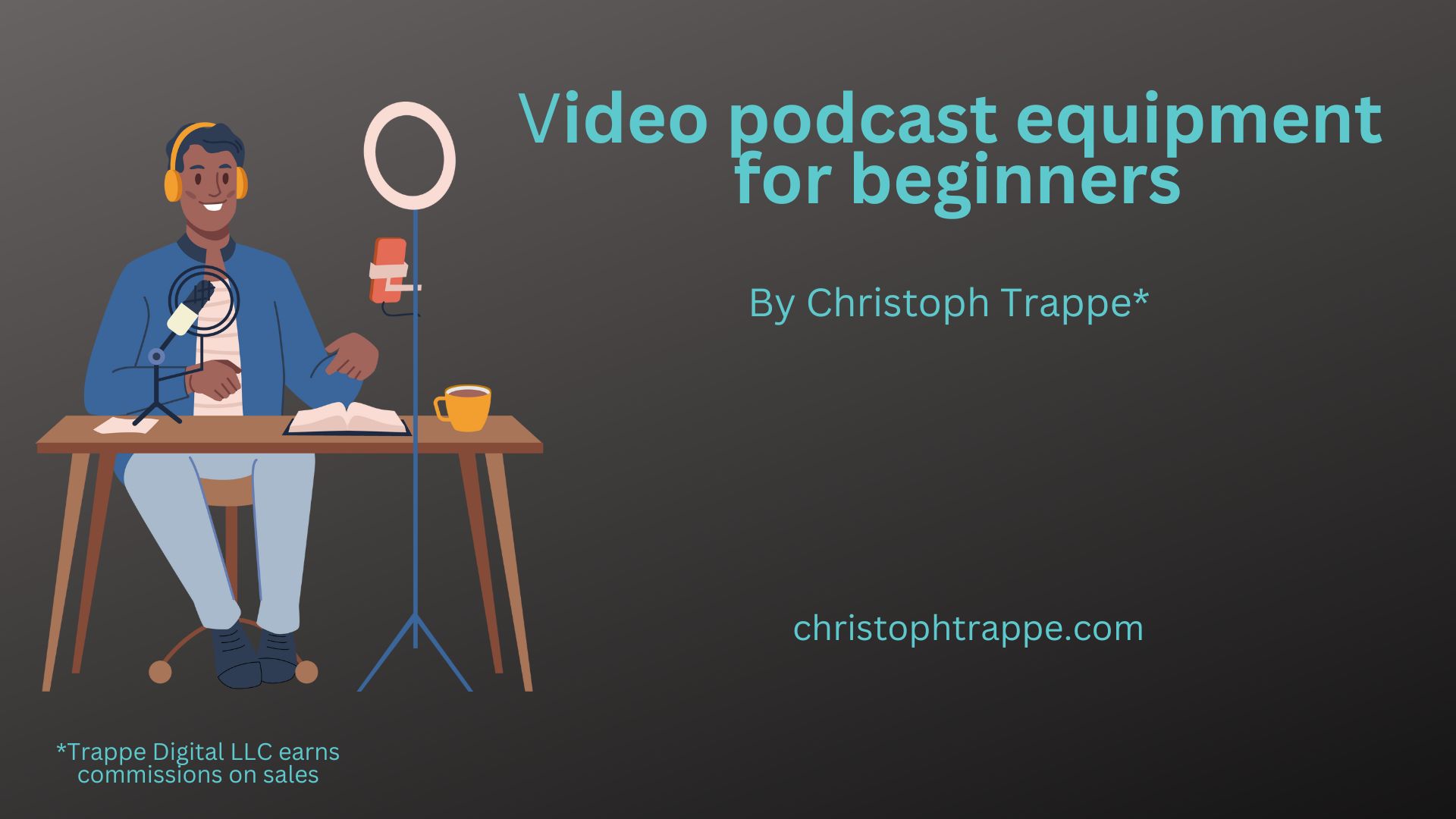Trappe Digital LLC may earn commission from product clicks and purchases. Rest assured, opinions are mine or of the article’s author.
It’s easy to overthink what video podcast equipment for beginners we should be using. And it certainly doesn’t help that many podcasts have a sweet setup. But you don’t need to start with six lights shining on you to get started. Heck, you can start with no lights and add equipment as you go.
In this article, I discuss video podcast strategy and video podcast equipment for beginners, including:
Video podcasts are especially worthwhile today, with Spotify running video podcasts and YouTube as well now.
To get started, know to start with your strategy. What are you going to talk about, who is talking about it, who is the audience, etc? If you are already producing audio podcasts, the strategy likely is already in place, and you can simply jump to how to get started with video.
What’s your overarching topic for the podcast?
Virtually all the podcasts I listen to have higher-level topics that they don’t stray from too far. Yes, they have episodes that are at the edges of that stated topic, but overall the sales podcast won’t be talking about something totally unrelated to sales.
Just like any content marketing channel, consider the following:
- What’s already out there?
- Would your podcast fill an empty topical niche?
- Is there an actual audience?
- Are you an actual expert on the topic?
- Do you have enough topics to cover weekly or bi-weekly, or monthly podcasts? Once you invite guests, I find it quite easy to produce a lot of shows. The guests are now your partner in topic collaboration.
- So while I typically don’t recommend over-analyzing focus groups or committee meetings with professional overthinkers, these are things to think about before starting, and even if you do a pilot for a few months, it’s still important to keep these things top of mind.
Set a rough agenda to start your video podcast
I usually follow this kind of setup:
- Hello, introductions and overview
- Topic intro
- Different points on the topic
- More points
- Maybe more
- Summary and wrap
Since my podcast is now on television, each episode is 24 minutes, so that’s a quick conversation.
But, take your time. Don’t rush it. New video podcast hosts sometimes breeze through things too quickly. Have a conversation. Go on relevant tangents. Embrace momentary silence. Some banter is okay. I always tell my guests: “It’s okay if we disagree on something.”
Guests
When you first start podcasting, some guests might not be interested in being on your first couple of episodes. My own first 20 episodes or so were me talking. But I also didn’t ask guests to come to the show right away.
Having guests, though, can make the show much easier to produce and make the conversation more fun. Guests usually also will promote the show once it’s live. It’s build-in promotion. Simply reach out to people that you want on your show. Not everyone agrees to be on mine, but I’ve had big names as guests, including:
- Joe Pulizzi
- Michael Brenner
- Tamara Burkett
- Sam Horn
- Seth Godin
- Mark Schaefer
- and many more
Let’s talk about the basic equipment needed for a video podcast.
Using an iPhone
You can definitely use an iPhone to get started. The camera is great, and so is the microphone. You can also use your iPhone as the MacBook’s camera.
The MacBook Pro
I currently use a MacBook Pro to do most of my video podcasts using Restream – a web-based software. Be sure to use Chrome (and not Safari), and the quality with a MacBook is great. Other PCs also work. Close unnecessary tabs and make sure it’s picking up the correct microphone.
A microphone
I use a Blue Yeti, which usually costs under $100 on Amazon. The quality is great, and it plugs into your computer with a USB connection. For a MacBook Pro, you also need a USB-C to USB connector. Some microphones have a different connection, which require another interface. Personally, I think that’s too much work for beginning video podcasters.
Lighting
I prefer a Ring light on a large stand, so it’s not right in my face, but there are plenty of lighting options available. In general, you can even start by sitting in front of a window and using natural daylight.
Camera
I currently use a zoomable high-def webcam. It makes the framing easier.
The platform
If you want to stream with your iPad, here’s one option.
Here’s how that looks visually when you end a livestream in Switcher:
Click the button in the top right to stop. (The screenshots are from a show I did with Tim Ash)
It takes a moment to end:
Then move or copy to your camera roll:
There are some technical things to consider when you go live:
- Do you like your framing (I hardly ever do looking at myself).
- What kind of graphics do you need on the screen – if any?

That’s it! When I first started, I had way too much going on:
- I constantly flipped camera angles
- Switched graphics
- And more
I could barely focus on the discussion.
If you want to start your video podcast without actually being on camera, that’s easy to do as well. Just put up your podcast logo, like this on the live screen:

Video podcasting is a great way to get the most out of your podcast efforts and it’s not easier than ever and the equipment comes at a reasonable cost.







